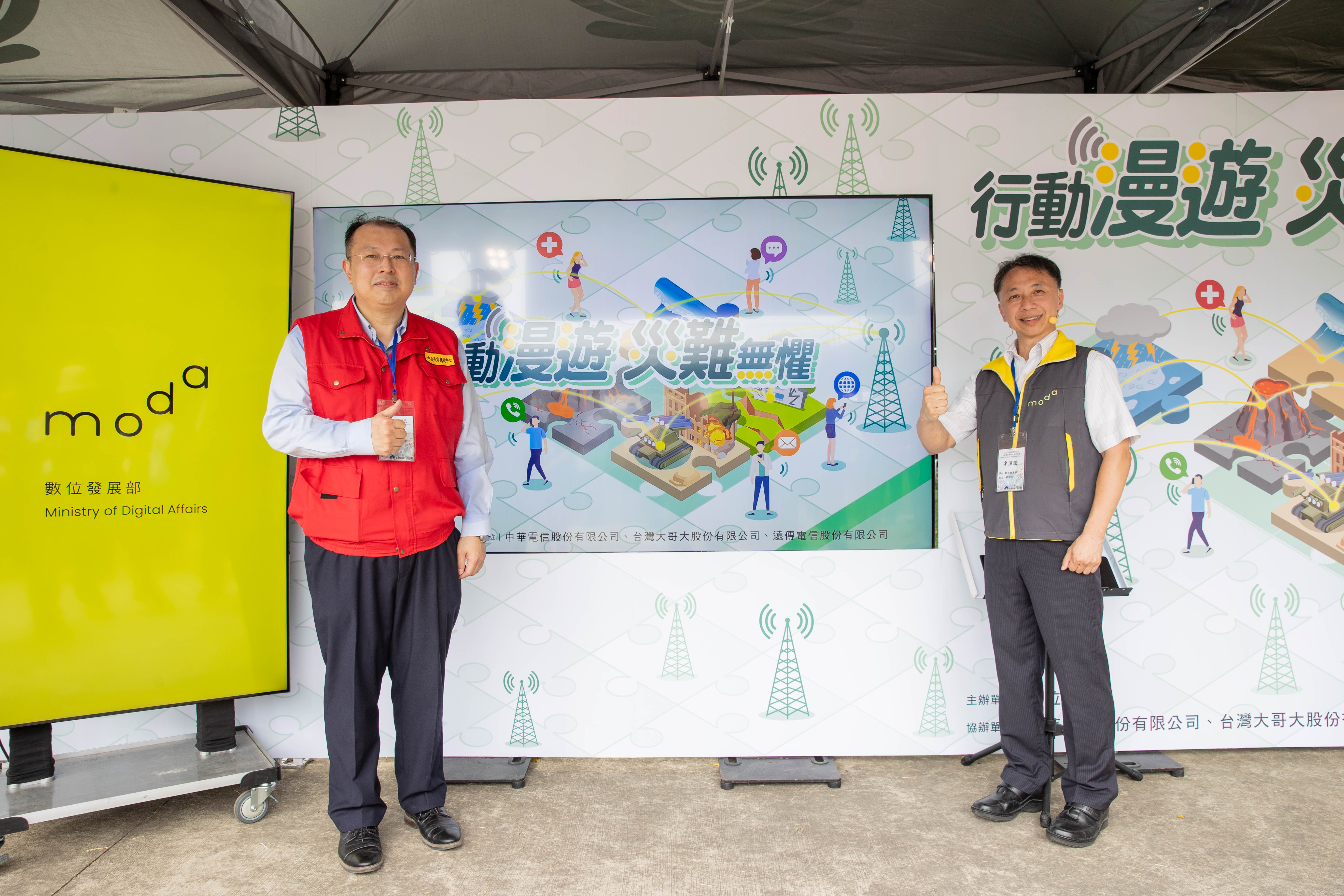Moda collaborates with 3 major telecommunications providers for the first-ever drill on "disaster roaming," ensuring people maintain basic communication in emergency
The Ministry of Digital Affairs (moda) is in coordination with the National Fire Agency, Ministry of the Interior for the "2023 National Disaster Prevention Day Large-Scale Earthquake Disaster Response Mobilization Exercise," and conducted its first-ever "disaster roaming" drill in collaboration with the three major telecommunications providers today (21st). This exercise simulated how the public can utilize cross-network roaming to connect to the operational mobile communication networks of other providers in emergency situations, ensuring their basic and secure communication rights. Through practical actions, this initiative aims to demonstrate how to enhance digital resilience. President Tsai Ing-wen was also visited to oversee the exercise, accompanied by Deputy Minister Herming Chiueh.
The moda explains that roaming is a commercial mechanism that allows users of telecommunications provider A to access the mobile communication services of provider B in specific areas. "Disaster roaming," on the other hand, is a government initiative aimed at ensuring that the public can maintain basic communication services during significant disasters or emergencies. This is achieved through the cooperation of telecommunications providers, who offer a nationwide roaming mechanism. As long as the mobile network of any provider remains operational, people can use that network to communicate and access accurate government information.
The moda said that the recent "disaster roaming" exercise was conducted on a small scale in the area of Hsinchu County Stadium. The choice of this location was made considering the high population and traffic density in the vicinity. To protect the communication rights of citizens and avoid any misunderstandings in usage, the exercise employed a "manual network selection" method to achieve cross-network roaming, instead of actually shutting down base stations nearby.
Through cooperation with telecommunications providers and system configurations, participants in the exercise were able to roam onto the mobile networks of providers with whom they did not have original contracts. They engaged in various exercise scenarios, including "checking in with loved ones," "receiving real-time news updates," and "easily accessing evacuation information."
To further enhance the disaster roaming mechanism, the moda has planned to continue the disaster roaming program from 2024 to 2025. They will study international cross-network roaming frameworks, develop Standard Operating Procedures, and provide recommendations for domestic telecommunications providers to activate disaster roaming mechanisms. This will strengthen the digital resilience of communication networks during major disasters, ensuring that citizens retain their basic and secure communication rights.

